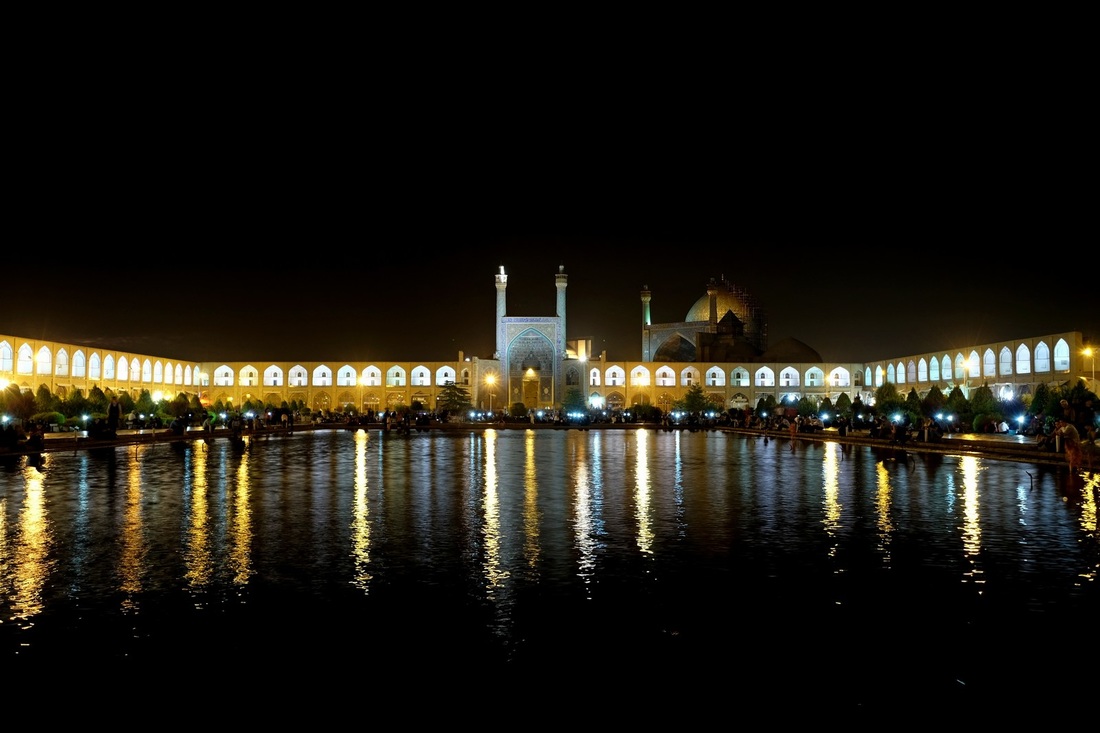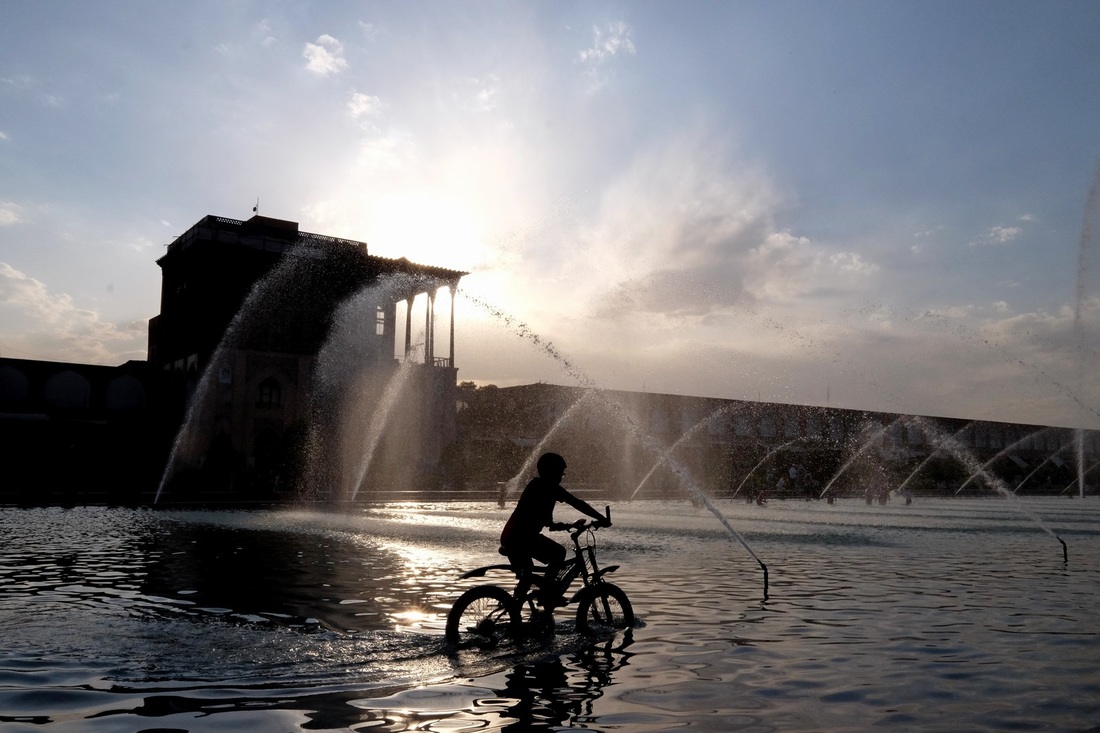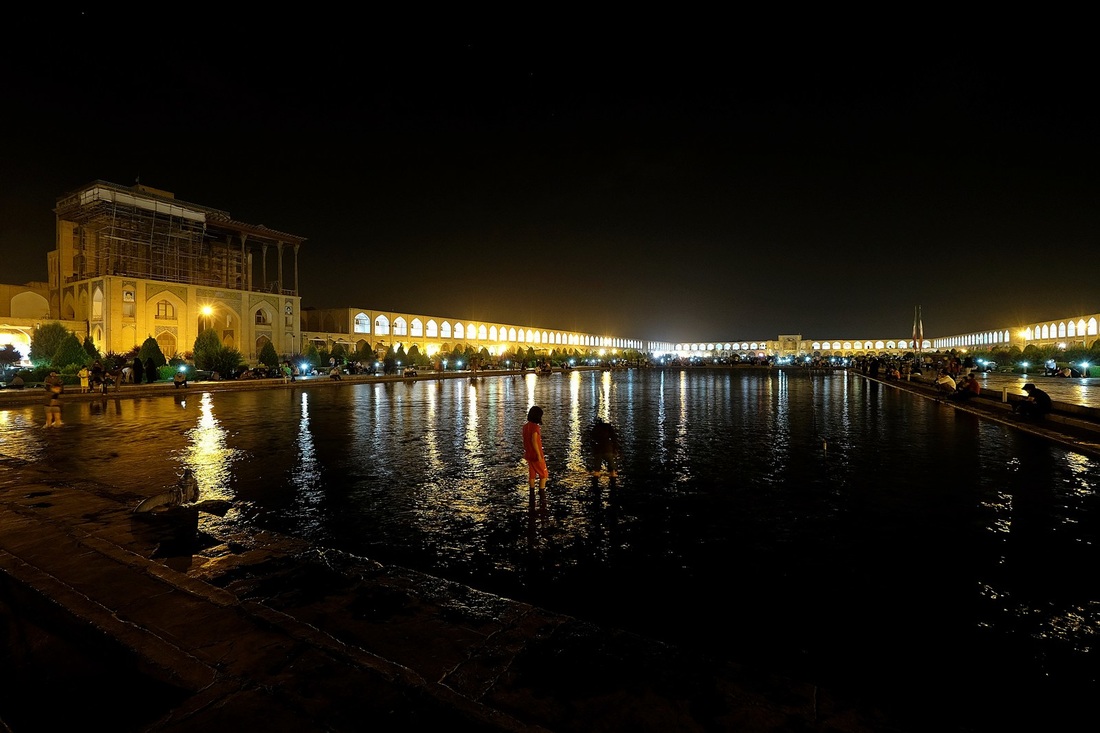The impossibly massive Imam Square with Masjid-e-Shah in the background.
T plus 68 - Esfahan
"Isfahan nesf-e jahan" - a 17th century Persian proverb translated as "Isfahan is half the world". Such was the allure and the unbridled magnificence of this city. At its prime, 400 years ago, Esfahan was larger than London and a sparkling symbol of the affluence and dominance of the Safavid dynasty.
Although Persian history spans almost 2,500 years, most of modern Iran's cultural and architectural heritage stem from the Safavid period (1501-1725). It was Shah Abbas I who ushered in the golden age of this dynasty, ruling over an empire which spanned all of Iran, the Caspian Sea region, Iraq, Afganistan, parts of Turkey, Syria, Pakistan and Central Asia. The Shah made Esfahan his capital in 1598 and funneled the wealth and creative talents of his vast empire into building a showcase worthy of its European contemporaries.
For example, Imam Square, the centrepiece of the Shah's capital still stands today as one of the largest city squares in the world. Flanked on either side by the soaring Masjid-e-Shah, and a centuries-old bazaar, Imam Square continues to function today as the city's focal point for religious worship, commercial trade and public congregations. In the past, the Shahs of Persia had used the enormous space as a polo arena; today families gather for picnics on the same grounds which once echoed with thundering hooves.
Esfahan is presently Iran's second largest city, with about 3 million inhabitants. It is a fantastic place to spend a couple of days to visit Iran's big-ticket sights, and also to soak-up the atmosphere of the country's symbolic cultural capital. Like everywhere else in Iran, the people of Esfahan are overwhelmingly accommodating, and one will most likely end-up with more than a few new friends.
Some photos from my walkabouts:
"Isfahan nesf-e jahan" - a 17th century Persian proverb translated as "Isfahan is half the world". Such was the allure and the unbridled magnificence of this city. At its prime, 400 years ago, Esfahan was larger than London and a sparkling symbol of the affluence and dominance of the Safavid dynasty.
Although Persian history spans almost 2,500 years, most of modern Iran's cultural and architectural heritage stem from the Safavid period (1501-1725). It was Shah Abbas I who ushered in the golden age of this dynasty, ruling over an empire which spanned all of Iran, the Caspian Sea region, Iraq, Afganistan, parts of Turkey, Syria, Pakistan and Central Asia. The Shah made Esfahan his capital in 1598 and funneled the wealth and creative talents of his vast empire into building a showcase worthy of its European contemporaries.
For example, Imam Square, the centrepiece of the Shah's capital still stands today as one of the largest city squares in the world. Flanked on either side by the soaring Masjid-e-Shah, and a centuries-old bazaar, Imam Square continues to function today as the city's focal point for religious worship, commercial trade and public congregations. In the past, the Shahs of Persia had used the enormous space as a polo arena; today families gather for picnics on the same grounds which once echoed with thundering hooves.
Esfahan is presently Iran's second largest city, with about 3 million inhabitants. It is a fantastic place to spend a couple of days to visit Iran's big-ticket sights, and also to soak-up the atmosphere of the country's symbolic cultural capital. Like everywhere else in Iran, the people of Esfahan are overwhelmingly accommodating, and one will most likely end-up with more than a few new friends.
Some photos from my walkabouts:
Imam square and Ali Qapu Palace - pretty by day, prettier by night.
Top pic: A boy thinking outside the box on his bike.
Bottom pic: A girl wading through the waters after a family picnic by the square.
Top pic: A boy thinking outside the box on his bike.
Bottom pic: A girl wading through the waters after a family picnic by the square.
Top pic: The 36m high dome of the main sanctuary in Masjid-e Shah. It was very acoustically advanced for its time, and scientists have measured 49 echoes reverberating through the chamber, although only 12 are audible to the human ear. Still, this provides enough amplification to a given speaker's voice so that it can be comfortably heard from anywhere in the rather massive sanctuary.
Bottom pic: A man wanders through the many arched walkways of Masjid-e Shah.
Bottom pic: A man wanders through the many arched walkways of Masjid-e Shah.
Pol-e Khaju, or Khaju Bridge at night. About 400 years old, it functions both as a bridge as well as a dam. The water levels were surprisingly low when I visited and parts of the river bed was exposed.
Bottom pic: Youths literally hanging-out on the bridge.
Bottom pic: Youths literally hanging-out on the bridge.
This is so cool. A shisha smoker firing up hot coals using a metal-caged sphere in which smoldering coals go into, and the entire assembly is swung round and round using an attached chain until the coals are red hot. You have to be brave to do this. And braver still to stand close enough to take a wide angled shot!
1/5 shutter speed to achieve the right balance between exposure time to get the arc of fire, while keeping the guy's face in focus.
1/5 shutter speed to achieve the right balance between exposure time to get the arc of fire, while keeping the guy's face in focus.








